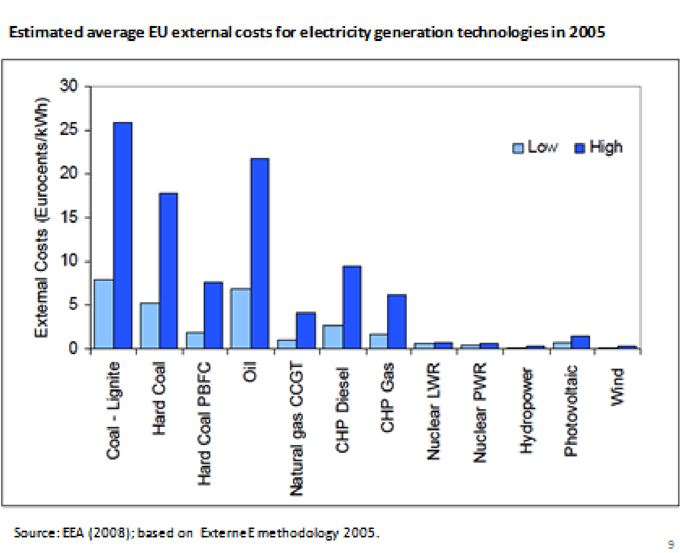The economics of nuclear energy.
What is true and what is false in the Italian debate.
On a first reading of these facts (figures 1 and 2) one may get the impression that nuclear energy is a rather low cost source and, even more important, that it is practically the best in terms of negative externalities, i.e. of CO2 emissions, both with respect to the older LWR technology and to the newer PWR one.
Figure 2

Source : European Environmental Agency (2008), ‘EN35 External costs of electricity production’, available on http://www.eea.europa.eu/data-and-maps/indicators/en35-external-costs-of-electricity-production-1
Moreover it has been argued that the reduction in the Italian costs of electricity production (such costs are incidentally higher than the European average) would be substantial, around 20% according to ENEL (based on undisclosed sources).
We shall now read these facts less superficially and in reverse order, beginning with the asserted 20% reduction in production costs. Actually, according to a more transparent, though rough, estimation by Alberto Clò[1], costs’ reduction would vary in a range from 2% to 5%. The social benefits may be quite lower but still positive. The problem is then to investigate who benefits from the cost reduction: the producers or the consumers.
Note
1. Alberto Clo, Si fa presto a dire nucleare, Il Mulino, 2010.↑

